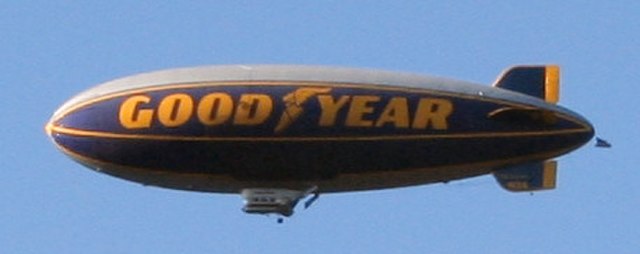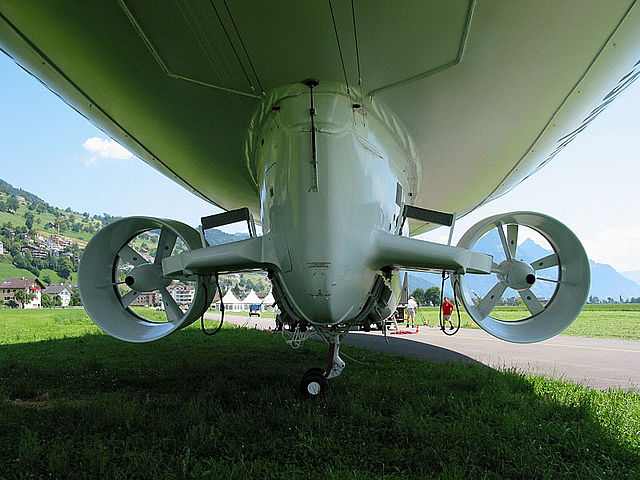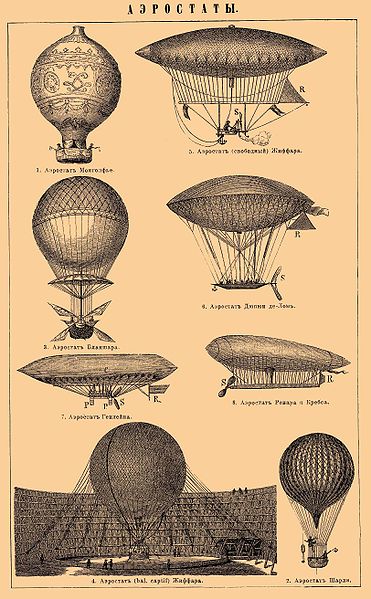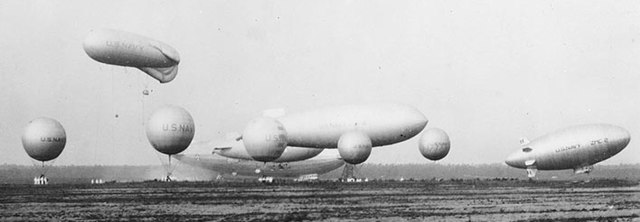A blimp (/blɪmp/), or non-rigid airship, is an airship (dirigible) without an internal structural framework or a keel. Unlike semi-rigid and rigid airships, blimps rely on the pressure of the lifting gas inside the envelope and the strength of the envelope itself to maintain their shape. Blimps are known for their use in advertising, surveillance, and as observation platforms due to their maneuverability and steady flight capabilities.
The Spirit of Goodyear, one of the iconic Goodyear Blimps
Steerable ducted fans on a Skyship 600 provide thrust, limited direction control, and also serve to inflate the ballonets to maintain the necessary overpressure.
A modern blimp from Airship Management Services showing a strengthened nose, ducted fans attached to the gondola under the hull, and cable-braced fins at the tail
Advertising blimp landing at local airport in New Jersey
An airship or dirigible balloon is a type of aerostat or lighter-than-air aircraft that can navigate through the air under its own power. Aerostats gain their lift from a lifting gas that is less dense than the surrounding air.
A modern airship, Zeppelin NT D-LZZF in 2010
Dirigible airships compared with related aerostats, from a turn-of-the-20th-century encyclopedia
U.S. Navy airships and balloons, 1931: in the background, ZR-3, in front of it, (l to r) J-3 or 4, K-1, ZMC-2, in front of them, "Caquot" observation balloon, and in foreground free balloons used for training
The air-filled red balloon acts as a simple ballonet inside the outer balloon, which is filled with lifting gas.








